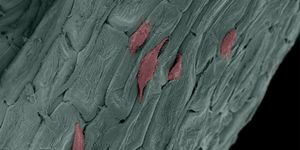While microbes reside virtually everywhere, there has been intense research interest in microbes residing in one place in particular - the human gut. As genetic technologies advanced, it gave investigators an unprecedented window into the myriad microorganisms that live within us, usually referred to as the human microbiome (bacterial species can be identified by sequencing the 16S rRNA-encoding genes in fecal samples). The microbes themselves are often harmless and in fact play very important roles in the maintenance of our health; for example, in some cases metabolic byproducts made by the micro biome are crucial to health and not made by our own cells.
But when imbalances and disorder impacts the microbial community, it can wreak havoc, as scientists are learning. There is a growing body of evidence that links dysfunction in the microbiome to health problems, which leo means it can be a target for therapeutics.
It was once thought and is often repeated that there are ten times as many bacterial cels in our body as cells of our own, but other research has indicated that ratio is more likely to be one-to-one. There are typical species found in the human gut, but the composition from one person to another can vary widely. You can learn more about it in the video.








